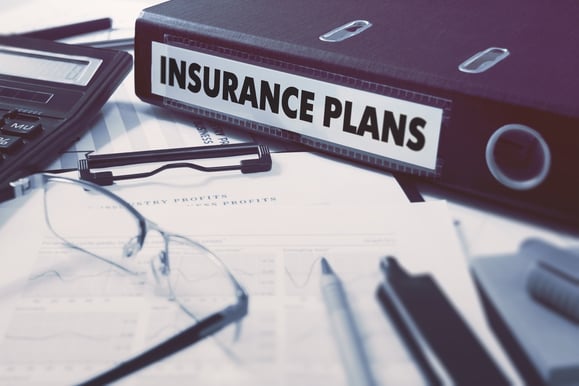Work Travel Accidents: What Steps Employers and Employees Can Take

Work-related travel has become an integral part of modern business. Whether it’s attending conferences, meeting clients, or visiting remote offices, employees are often on the move.
While these trips are essential for growth and collaboration, they come with their own set of risks for work travel accidents. These incidents can range from minor inconveniences to life-threatening situations, and they require careful attention from both employers and employees.
In this blog, we’ll explore what work travel accidents are, how they can be prevented, and what steps both employers and employees can take to ensure safety and proper handling when accidents occur. So, let’s dive right in!
Understanding Work Travel Accidents
Before diving into prevention and response, it’s important to understand what constitutes a work travel accident. Simply put, these are incidents that occur while an employee is traveling for work purposes. This could include car accidents, slips and falls, flight delays leading to injuries, or even health emergencies in unfamiliar locations.
Employees who drive for business purposes or use company transportation can face risks on the road. For example, in Rockford, 3,710 vehicle accidents were recorded in 2022, out of which 853 were front-to-rear end collisions. Some of these involved employees traveling for work-related tasks or using company vehicles.
If an employee of your company faces anything like this and is injured in such an accident, handling insurance claims and liability issues can be challenging. This is where an accident attorney or personal injury law firm can help. Their legal guidance ensures that the injured worker gets proper compensation while protecting the company from unnecessary legal complications.
Having clear policies on work-related travel and accident response can help businesses stay prepared for these situations.
The Role of Employers in Preventing Work Travel Accidents

Employers have a responsibility to ensure the safety of their employees, even when they’re on the road. Here’s how they can step up:
Creating a Comprehensive Travel Policy
A well-defined travel policy is the foundation of work travel safety. This document should outline safety guidelines, approved modes of transportation, and emergency protocols. For example, it might specify that employees should avoid driving late at night or in hazardous weather conditions. It should also include a list of emergency contacts and resources employees can access while traveling.
Utilizing reliable transportation services, such as Washington DC airport car service, ensures that employees have a safe and professional travel option when arriving at or departing from the airport.
Providing Safety Training
Training employees on travel safety is just as important as training them for their regular job duties. Consider offering sessions on defensive driving, situational awareness, and basic first aid. Employees who know how to handle unexpected situations are less likely to panic and more likely to make wise decisions in emergencies.
Ensuring Proper Insurance Coverage
Insurance is a safety net for both employers and employees. Employers should provide comprehensive travel insurance that covers medical emergencies, trip cancellations, and accidents. Additionally, workers’ compensation should be extended to work-related travel. This protects employees and shields the company from potential legal issues.
Steps Employees Can Take to Stay Safe During Work Travel

While employers play a crucial role, employees also have a responsibility to prioritize their own safety. Here are some practical steps they can take:
Planning Ahead
Preparation is key to avoiding accidents. Before traveling, research your destination thoroughly. Check the weather forecast, understand local safety conditions, and familiarize yourself with emergency services in the area. Share your itinerary with your employer and a trusted family member or friend. This ensures someone knows your whereabouts in case of an emergency.
Staying Vigilant
When you’re in an unfamiliar place, it’s easy to let your guard down. However, staying alert can prevent many accidents. Avoid risky behaviors like distracted driving or walking in poorly lit areas at night. Always follow your company’s travel policies, as they’re designed to keep you safe.
Knowing What to Do in Case of an Accident
Despite your best efforts, accidents can still happen. If you’re involved in an incident, seek medical help immediately if needed. Report the accident to your employer as soon as possible and document everything, take photos, gather witness statements, and keep records of any expenses. This documentation will be crucial for insurance claims or legal purposes.
Building a Culture of Safety

Preventing work travel accidents isn’t just about policies and procedures; in fact, it’s about fostering a culture of safety. When employers and employees work together, they can create an environment where safety is a top priority.
For example, some companies have implemented regular safety check-ins during travel or created peer support systems where employees can share tips and experiences. By encouraging open communication and continuous learning, organizations can reduce the likelihood of accidents and ensure everyone feels supported.
Final Thoughts
Work travel accidents are an unavoidable risk in today’s fast-paced business world. Still, they don’t have to derail productivity or compromise safety.
By fostering collaboration between employers and employees, organizations can create a framework that prioritizes prevention, preparedness, and effective response. Employers must lead with clear policies, training, and support, while employees should stay proactive and vigilant during their travels.
When both parties work together, they can turn potential challenges into opportunities for growth and resilience. After all, a safe journey is the first step toward a successful trip.